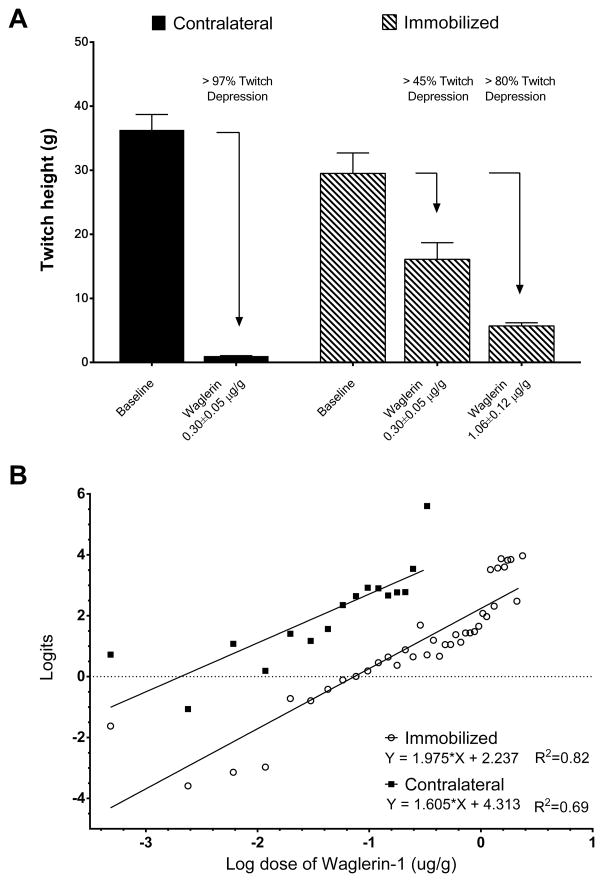Figure 1.
Figure 1A. Immobilization leads to decreased contribution by mature acetylcholine receptors (AChRs) to neurotransmission
The baseline twitch tension on the contralateral (unimmobilized) side was 36.3 ± 2.4 g, and that on the immobilized side was 29.5 ± 3.2 g, which was significantly (P = 0.014, N = 9) lower, confirming the effectiveness of immobilization. Waglerin-1 (0.30 ± 0.05 μg/g) depressed the twitch response on contralateral side to greater than ≥ 97%, while the twitch depression on immobilized side was 45% (P = 0.001). Additional dose of Waglerin-1 (0.76 ± 0.11 μg/g) or a total dose of 1.06 ± 0.12 μg/g could not cause twitch suppression ≥ 80%. This suggests that AChRs other than mature AChRs contribute to neurotransmission.
Figure 1B. Dose-response curve for Waglerin-1 is shifted to the right on the immobilized versus contralateral side
The cumulative log doses of waglerin-1 were plotted against percent twitch inhibition (logit plot). The doses of waglerin-1 that produced 50% depression of the first twitch of the train-of-four (T1) Effective Dose (ED50) on immobilized and contralateral side were 0.32 ± 0.14 μg/g and 0.07 ± 0.06 μg/g, respectively. The ED95 of waglerin-1 was significantly (p=0.0002) higher on the immobilized side (1.43 ± 0.16 μg/g vs. contralateral side (0.41 ± 0.04 μg/g) indicating resistance to the effects of waglerin-1 on the immobilized compared to the unimmobilized side.

